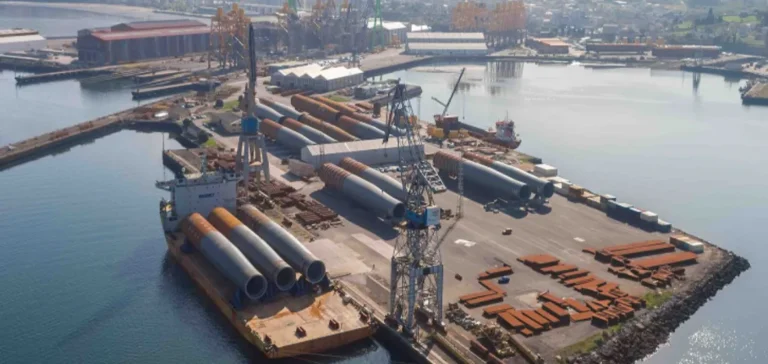Iberdrola has received the final delivery of monopiles for the Windanker offshore wind farm, located in German waters in the Baltic Sea. These structures, essential for anchoring wind turbines, were produced at the joint Navantia Seanergies and Windar Renovables facility at the Fene shipyard in Galicia. This is the second major contract between these industrial partners, highlighting the rise of strategic collaboration in the European offshore wind sector.
An industrial partnership shaping Europe
The order for Windanker monopiles is part of a framework agreement signed in 2021 for the manufacture of XXL foundations, with a total value exceeding €1 bn ($1.09 bn) over ten years. Each monopile measures up to 84 metres in length, 10 metres in diameter and weighs 2,100 tonnes, generating three hundred jobs at the Spanish site. Investments at Fene, totalling €36 mn ($39.2 mn), enabled the adaptation of industrial facilities, including new painting booths, storage areas and the integration of advanced equipment for the production of these components.
The Windanker farm, scheduled to be commissioned in 2026, will have a capacity of 315 MW and will feature the latest generation of turbines with a unit output of about 15 MW. This project forms part of Iberdrola’s Baltic cluster, which already includes Wikinger (350 MW) and Baltic Eagle (476 MW), for a total capacity of over 1,100 MW and an overall investment of €3.5 bn ($3.81 bn).
Growth of European offshore wind
The joint efforts of Navantia Seanergies and Windar Renovables illustrate the anchoring of the supply chain in Europe and the growing interest in local industrial integration. Over the past ten years, the collaboration between Iberdrola and its Spanish suppliers has led to the delivery of foundations and substations for projects in Germany, the United Kingdom, France and the United States. This strategy helps ensure the stability of skilled jobs and supports the competitiveness of the regional industry in a highly competitive market.
At the same time, the manufacture of monopiles for the East Anglia THREE project in UK waters is continuing at Fene and Avilés, confirming the industrial momentum generated by the Navantia-Windar partnership. This new UK complex is expected to reach an installed capacity of 2,900 MW.
Expansion prospects and international ambitions
Iberdrola currently operates more than 2,470 MW of installed offshore wind capacity and aims for 6,500 MW by 2030, supported by ongoing investments in Europe, North America and Asia-Pacific. Ricardo Domínguez, president of Navantia, welcomed Iberdrola’s renewed confidence in Spanish industry, noting that “the supply of these foundations contributes to the development of the national supply chain.” For Orlando Alonso, executive president of Windar Renovables, this contract demonstrates “the quality and reliability” of the products resulting from cooperation with Navantia Seanergies.






















